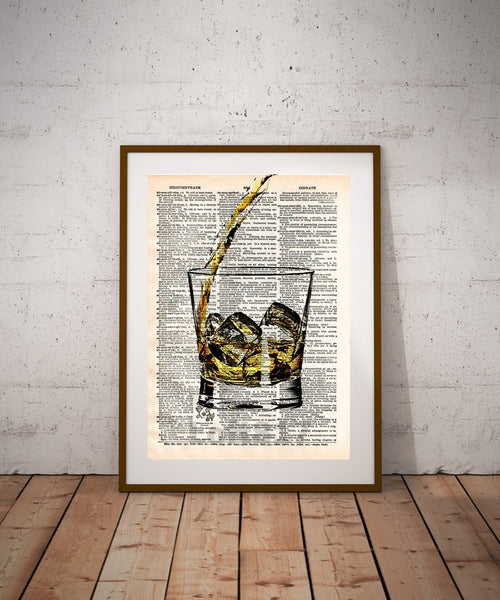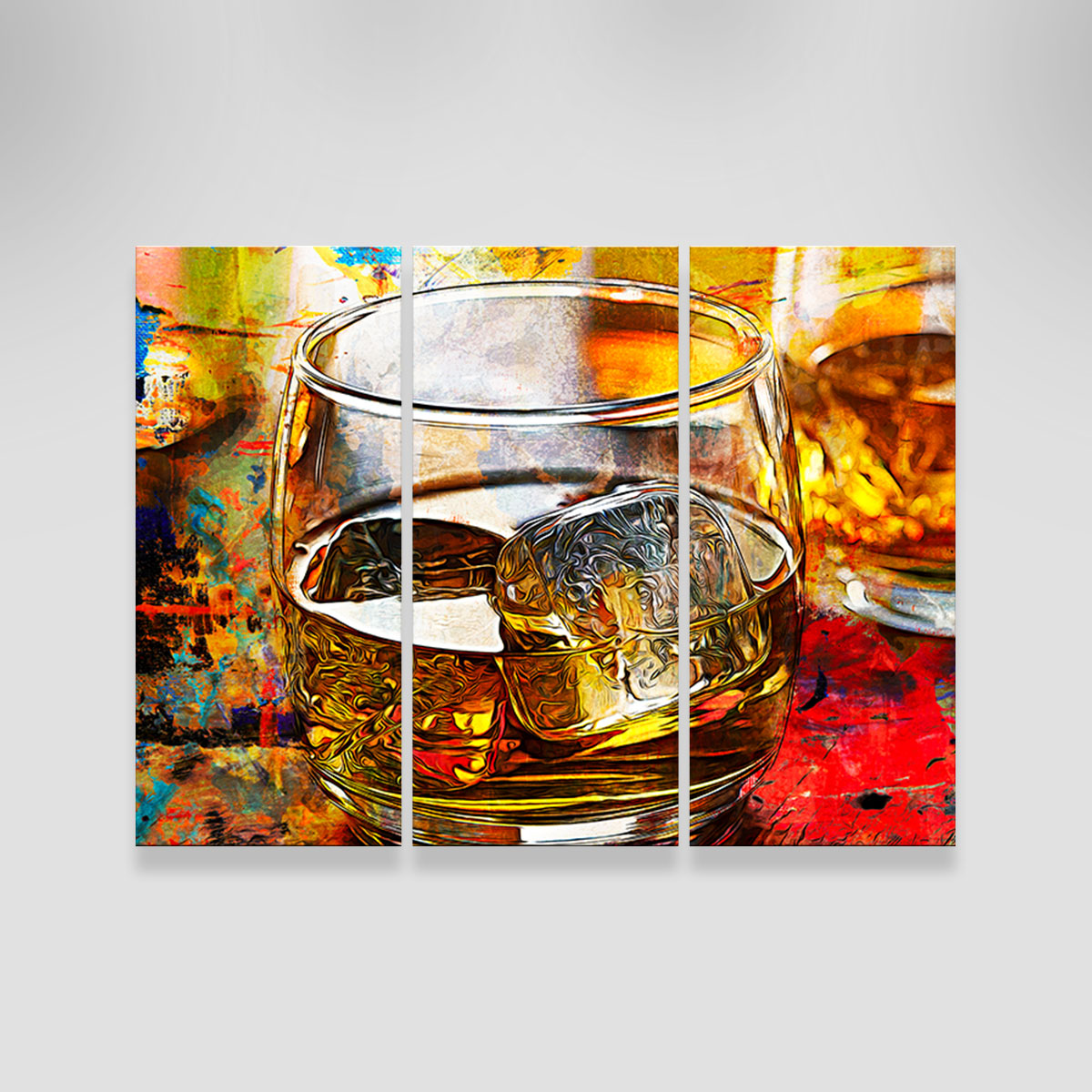The Importance of Whiskey Art in Celebrating Heritage and Workmanship in the Beverage Sector
The complex partnership between scotch art and the party of heritage and workmanship within the drink industry can not be overstated. Through thoughtfully designed tags and bottles, whiskey brand names envelop their historic roots and the artisanal skills that define their production methods. This imaginative measurement not only enhances market charm but also works as an avenue for social storytelling, fostering a deeper connection in between the customer and the craft. As we discover the numerous facets of this topic, intriguing questions about the influence of contemporary fads on standard methods develop, motivating further exam.
The Historical Origins of Whiskey
At the heart of scotch's appeal lies an abundant tapestry of historical roots that trace back to ancient human beings. The origins of bourbon can be linked to the distillation methods of the Sumerians and Babylonians around 2000 BCE, where early types of fermented grain drinks started to arise. Nevertheless, it remained in the Center Ages that the art of distillation advanced dramatically, particularly in Ireland and Scotland, bring about the production of scotch as we understand it today.
The term "whiskey" itself originates from the Gaelic word "uisce beatha," suggesting "water of life." This phrase emphasizes the cultural importance of whiskey in Celtic societies, where it was commonly associated with routines, parties, and public bonding. By the 15th century, distillation came to be an acknowledged craft within reclusive areas, leading the method for the establishment of lawful distilleries.
As trade courses increased, scotch's appeal expanded, transcending local borders and capturing the rate of interest of lovers worldwide. Whiskey Art. This historical trip shows not only the craftsmanship behind bourbon production yet likewise its essential function in social and social contexts, noting it as a substantial drink throughout history
Artistic Expression in Branding
Whiskey branding stands as an engaging crossway of virtuosity and commerce, where visual identification plays a vital function in forming customer assumption. The aesthetics of bourbon labels, product packaging, and marketing products mirror not only the brand's story but likewise its core values and heritage. Through creative expression, distilleries share a narrative that resonates with consumers, evoking feelings and stimulating links.
The usage of shade, typography, and images in branding offers to differentiate products in a saturated market. Conventional themes might stimulate a sense of authenticity and workmanship, while modern styles can indicate technology and forward-thinking. This calculated imaginative direction boosts brand name recognition and commitment, permitting customers to create a personal partnership with the bourbon they pick.
In addition, imaginative expression in branding commonly functions as a party of regional heritage. Distilleries often include neighborhood signs or historical recommendations right into their designs, developing a feeling of place that welcomes consumers to take part in a wider social experience. Ultimately, the virtuosity behind scotch branding not only boosts visual appeal but additionally enhances the overall story of the brand, fostering a much deeper recognition for the craftsmanship and heritage ingrained in each container.
Workmanship in Container Design
The creativity obvious in scotch branding prolongs past visual identification to incorporate the craftsmanship associated with container style. Each bottle offers as a vessel not just for the spirit within, but also for the story it informs concerning its quality, custom, and origin. The design procedure calls for precise focus to detail, as aspects such as material, closure, and form contribute significantly to the overall perception of the bourbon.
Craftsmanship in container design entails choosing high-grade glass that can boost the bourbon's shade and clearness, while likewise providing a tactile experience for the consumer. The shape of the container should be both useful and aesthetically enticing, commonly showing the heritage of the brand. Many distilleries opt for unique forms or embossed logo designs that evoke a feeling of credibility and history.
Additionally, the label style and typography play an essential role in interacting the brand's narrative. Whiskey Art. A well-crafted bottle not just captivates the consumer's eye but also enhances the brand's commitment to quality and tradition. By doing this, the craftsmanship of container design ends up being a vital aspect of the whiskey experience, merging creativity with an extensive respect for heritage
Cultural Relevance of Whiskey Art
Commemorating practice and workmanship, the cultural relevance of bourbon art transcends simple appearances, linking with the social and historic stories of the look at this web-site regions where it stems. Each container serves as a canvas, showing the one-of-a-kind stories, folklore, and traditions that have shaped local whiskey-making practices. The detailed layouts often mirror the heritage of the distillers, including icons and motifs that reverberate with the society and values of their areas.

Additionally, scotch art plays an essential role in common gatherings and celebrations, acting as a substantial web link in between individuals and their shared experiences. By valuing the virtuosity in whiskey packaging, customers cultivate a much deeper understanding and regard for the craft, eventually enriching their enjoyment of the drink itself.
Modern Trends in Bourbon Discussion
In recent times, the presentation of whiskey has advanced to show contemporary preferences and patterns while still honoring conventional workmanship - Limited Edition. Distilleries are progressively focusing on visual aspects that enhance the overall drinking experience, linking the gap in between heritage and modernity
Innovative bottle layouts have emerged, commonly incorporating sustainable products and imaginative tags that tell compelling tales. Several brands now collaborate with local artists, infusing their products with one-of-a-kind visual expressions that resonate with consumers. In addition, limited-edition launches are frequently packaged in collectible containers, adding value and charm for aficionados.

Verdict
To conclude, scotch art functions as a vital channel for expressing the heritage and workmanship fundamental in the drink sector. With intricate branding, innovative bottle layouts, and culturally significant imaginative elements, bourbon brands successfully honor their customs and get in touch with customers. This creative story not just boosts the gratitude of bourbon yet additionally strengthens neighborhood identity and satisfaction amongst producers. Ultimately, scotch art plays a crucial role in preserving Read More Here and commemorating the abundant cultural tapestry of whiskey-making.


Craftsmanship in bottle style includes picking high-quality glass that can improve the scotch's color and quality, while also offering a tactile experience for the consumer. In this method, the craftsmanship of bottle style becomes an essential aspect of the bourbon experience, combining creativity with browse this site a profound regard for heritage.
In final thought, scotch art serves as an important channel for revealing the heritage and craftsmanship inherent in the drink industry.